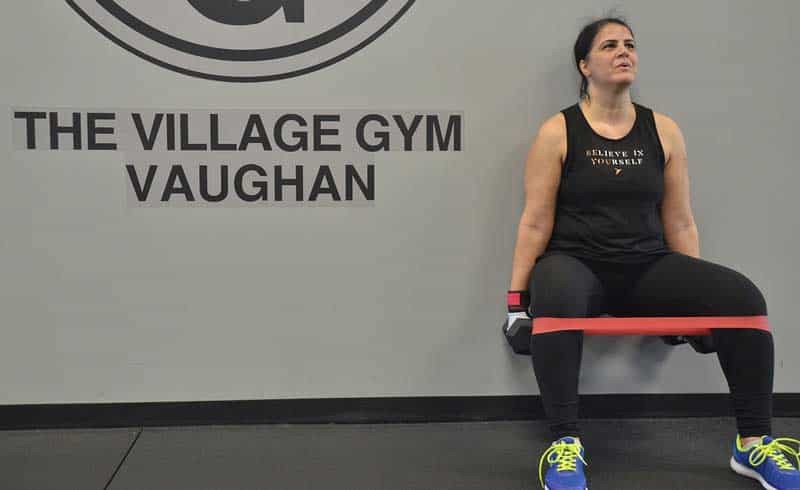Best Isometric Exercises To Perform: There are a lot of different types of exercises that we incorporate in our everyday workout routine and each exercise serves a certain purpose.
It is very important to keep on progressing and not just stick to the predetermined workout that you have been doing for a few months if you plan to improve and help yourself stay more than just fit.

Inspiring your journey, one story at a time. #LifeFalcon.
Isometric exercises have been widely ignored by a number of folks going to the gym.
Some people have not even heard about it.
You might not have heard about isometric exercises before too, but today we are going to present to you an elaborate guide about.it and tell you its importance so that you may include them in your workout as well.
Table of Content
What are isometric exercises really?
The term “isometric” has its origin in two Greek words, isos which means equal, and metria which means measuring. It is an exercise that involves the static contraction of a muscle or muscles with no change in the angle of the joint or the length of the muscles, which is why it is called isometric.
Simply put, an isometric exercise is an exercise that involves no movement.
Let’s look at some of the isometric exercises category-wise…
Upper body and Abdominal muscles
Plank

Plank is one of the best and most widely known isometric exercises. The plank strengthens the abdominal muscles, back, and shoulders.
The most common form of the plank is the forearm plank, which is held in a position similar to a pushup, but the weight of the body is borne on your forearms, shoulders, and toes.
You start by lying on the ground in a position similar to a push-up, with your shoulders directly above your elbows.
For beginners, you don’t need to lift your knees up off the ground. Maintaining proper form is crucial and this is what you need to focus on before moving to the advanced versions of this exercise. When you have practiced this sufficiently, you can start lifting your knees up and letting your toes bear the rest of the weight of your body.
Make sure that your back is straight and you are not sagging towards the ground. This is called the forearm plank.
Once you have this covered up, you can move on to the straight arm plank.
To do this exercise, you start by getting into the push-up position and just holding it for as long as you can.
Remember, maintaining proper form is essential. Make sure your shoulders are right above your elbows and not towards the side or anywhere else as that would put a lot of stress on your shoulders which would be bad for the joint and tendons. If you do not feel comfortable doing this exercise, you can rest your knees on the ground while maintaining the rest of the form.
Once you start getting good at it, you can lift your knees up off the ground and maintain the pushup position for as long as you can.
Make sure to rest for 5-10 seconds and stretch your back in between sets as well.
If you want to increase the intensity of this exercise, you can ask a friend to place a weight plate on your back, or if you are all by yourself then you can put that weight plate in a backpack and wear it while you perform this exercise. If you do not have a weight plate, even some books would do the trick.
Isometric push-up

A push is one of the best and widely recommended exercises for building a strong chest.
An isometric push-up is exactly the same as a standard push-up, but the only difference is that you hold the push-up position.
You can do this exercise by doing your standard set of push-ups and at the last rep, hold yourself midway in a push-up and maintain that position for as long as you can.
If you want a challenge, you can try the isometric diamond push-up as well.
This exercise focuses more on the inner chest. You perform this exercise by touching both of your index fingers and thumbs and forming a diamond with your hands while being in the standard pushup position.
Then you do a half push-up and maintain this position for as long as you are comfortable.
Hanging L-sit Hold

This is a difficult exercise but is one of the best exercises out there if you want to get ripped abs.
To perform this exercise you will need a pull-up bar. Start by grabbing the bar with your hands shoulder-width apart and hanging from it.
Keep your legs straight and held together as if they were glued together, and slowly raise your feet up to the height of your stomach or until your legs are parallel to the floor, and maintain this position for as long as you can.
This is an advanced exercise and requires arms and shoulder strength to maintain the hold as well as strong abs and hips to keep your legs parallel to the ground.
Beginners may start by getting used to the floor assisted L-sit with their heels resting on the ground and then moving on to the proper L-sit with your legs extended and feet above the ground.
Lower body
Wall sit

Wall sit is another great exercise for lower body strength.
This exercise primarily builds strength and endurance in the glutes, calves, adductor muscles, quadriceps and hamstrings.
To do a wall sit, you start by having your heels, your butt, and your upper back flat against the wall.
From this point, step your feet out and make sure your toes are pointing outwards at approximately 45 degrees and are roughly shoulder-width apart.
When you are ready, slide your back down the wall until your thighs are almost parallel to the floor, and voila!
You have pulled off a wall sit. Now all you have to do from this point on is just hold this position for as long as you can.
You should be able to feel a nice muscle contraction in the quadriceps and the glutes. Make sure your knees are right above your ankles and your back is touching the wall at all times.
You should focus on your breathing and continue to breathe in a controlled and regular manner.
Most people hold their breath while doing isometric exercises but that is mostly for isometric pulls, as you are constantly trying to pull or lift something that will not budge.
But breathing is a very important factor in almost every exercise, which if you do not get right, you would tire yourself out way earlier while you could have maintained the wall sit a whole lot longer.
When you cannot hold the wall sit any longer and decide to stand up, an easy way is to simply lean forward as that would decrease the stress on your legs and then you can stand up. Make sure to rest for about in between sets as well to let your muscles recover.
As you keep on doing it, or if you have been doing it for a long time and it is starting to seem too easy for you and you want to step up your game, you can try to hold a medicine ball or a dumbbell to increase the intensity of this exercise.
Sumo squat

Even if you are unfamiliar with this exercise, you can easily picture it by imagining a Sumo wrestler.
To do this exercise, you want to start with your feet more than your shoulder-width apart, and your toes pointing out at about 45 degrees. In this position, you will do a half squat and you are going to hold this position.
This exercise does not include resting your back against the wall and is similar to a horse stance in martial arts.
This exercise also builds strength in your lower body i.e the glutes, calves, adductor muscles, and hamstrings.
Although you can hold a weight plate or dumbbells while doing this, it is not recommended for beginners as it is a difficult exercise.
When you have held this position for long enough and want to stand up but are facing difficulty in doing so, just drop your hands down and slowly get into a crouching position.
That will release the tension in your legs and you will be able to stand up fairly easily.
Upper and Lower Back
Superman Hold

The Superman Hold is a great exercise to strengthen your upper and lower back. It is recommended for people with back problems and helps alleviate back pain due to weak muscles.
Additionally, this exercise also does work on your glutes, hamstrings, and shoulders.
The way to go about this exercise is by lying flat on your belly on the ground with your arms stretched out in front of you and your feet pointing straight behind you.
Now you want to simply raise your hand and your feet above the ground and hold this position for as long as you can.
Straight Bridge

This exercise is great for strengthening the upper back muscles, glutes, hamstrings, and your chest as well.
To perform this exercise, you are going to start by sitting on the ground with your legs extended in front of you, and your hand on the floor with your fingers pointing in the direction of your feet.
Once in this position, you are going to scoop your hips forward a little and let your heels rest on the ground, and then you are going to raise your body up using your lower back and your glutes. Maintain this position for as long as you are comfortable.
You will notice that in order to hold this position you have to push down on the ground with your hands which is stretching your chest as well.
It is important that you open your chest and allow the stretch instead of just using your hips and lower back to maintain this position.
Commonly Asked Questions…
What is the difference between isotonic and isometric contractions?
The change in the length of the muscle during contraction defines the type of muscle contraction.
Isotonic muscle contractions maintain tension in the muscle with changes in the length of the muscle.
They can be eccentric and concentric contractions.
Concentric contraction is a type of muscle contraction in which the length of the muscle shortens while generating force. An example of this contraction would be lifting a dumbbell and doing a bicep curl.
An eccentric muscle contraction happens when you bring the dumbbell down and the muscle elongates while still generating force.
In contrast to isotonic contractions, an isometric contraction is a type of muscle contraction in which the muscles generate force without any change occurring in the length of the muscle.
Do planks burn fat?
A plank is one of the best exercises you can do to burn fat as they engage multiple muscles in your body.
They seem easy but require a lot of strength and balance.
Rather than doing only isotonic exercises to build your abs, it is very important to do planks as well to keep your abs tight, otherwise, you would have abs but your stomach would still be bulging out.
It is generally recommended that you do planks before your workout so you can stabilize your core in the exercises that follow and perform better with a strong core.
A plank hold is generally held for a minimum of 60 seconds, but it is alright if you cannot hold it up for a minute. Just hold it for as long as you can and you’ll be good.
What is the rule # 1 to get fit?
Rule # 1 to get fit is to eat healthily.
No matter how much you workout, you will never be able to out-train a bad diet.
Sugary foods are to be especially avoided, although you can substitute them with healthy alternatives like honey and fruits. Make sure to divide your meals into portions of fiber, carbohydrates, and proteins.
Summing Up
As every exercise has its own benefits, none of them can be thrown out the window and ignored.
It is important to include a mix of isotonic and isometric exercises in your workouts to get the best results and focus on improving by adding increments of reps and sets, and even including advanced exercises when the ones you currently follow start seeming too easy for you.
But above all, remember to eat healthily and not throw away all the effort you put into your workouts by following a bad diet. We wish you all the best of luck on your journey to fitness and improvement. Cheers.



















